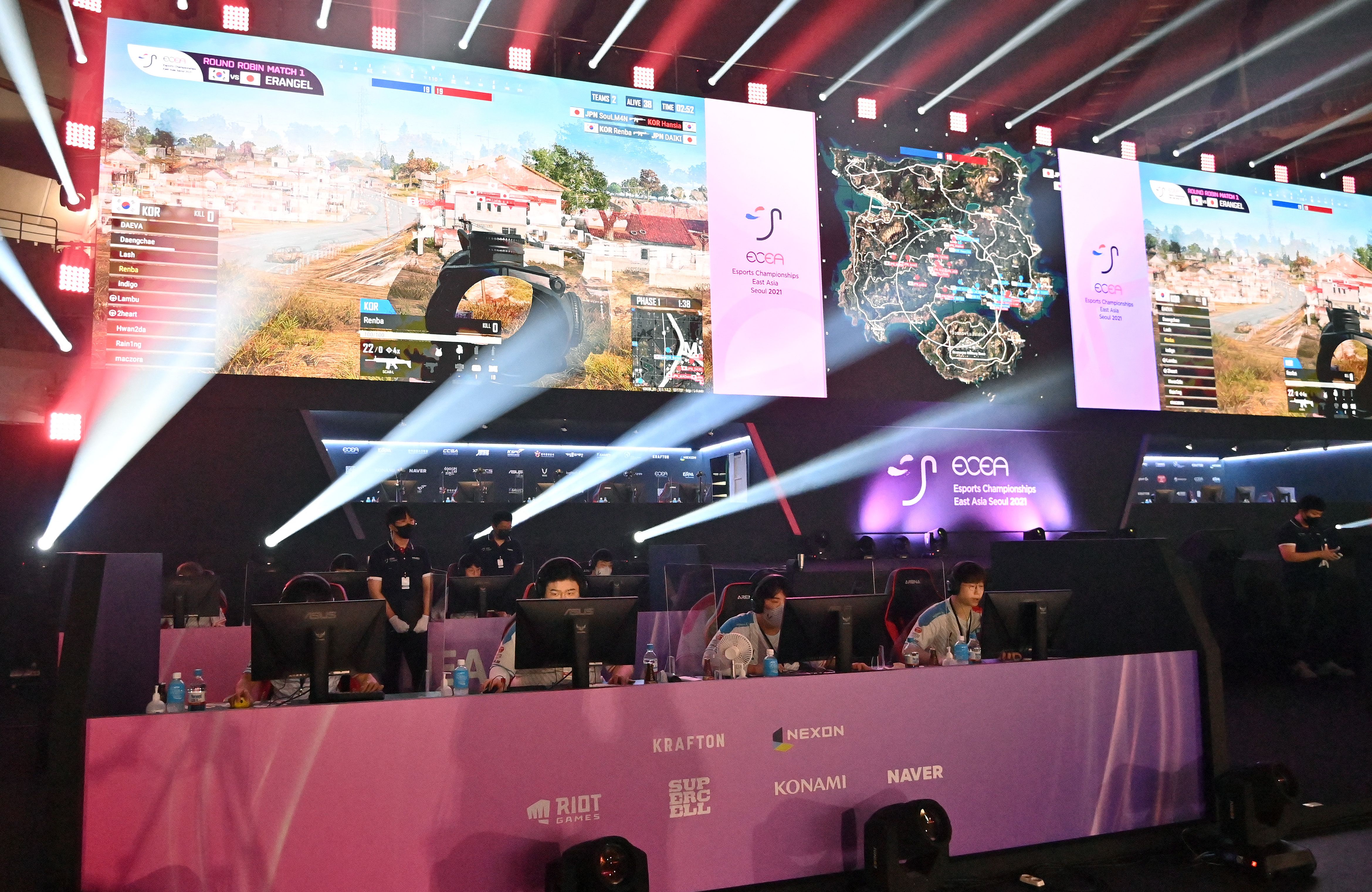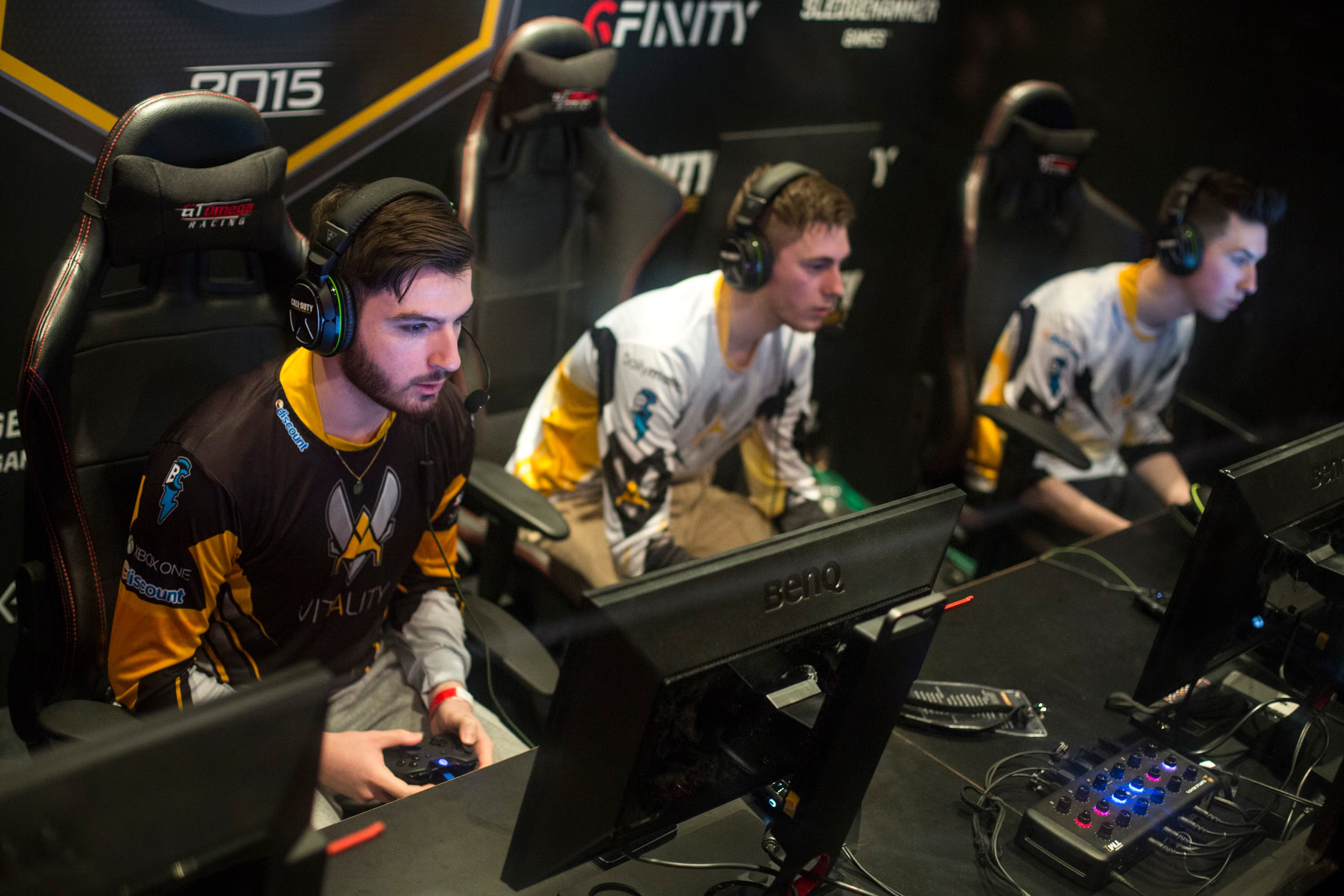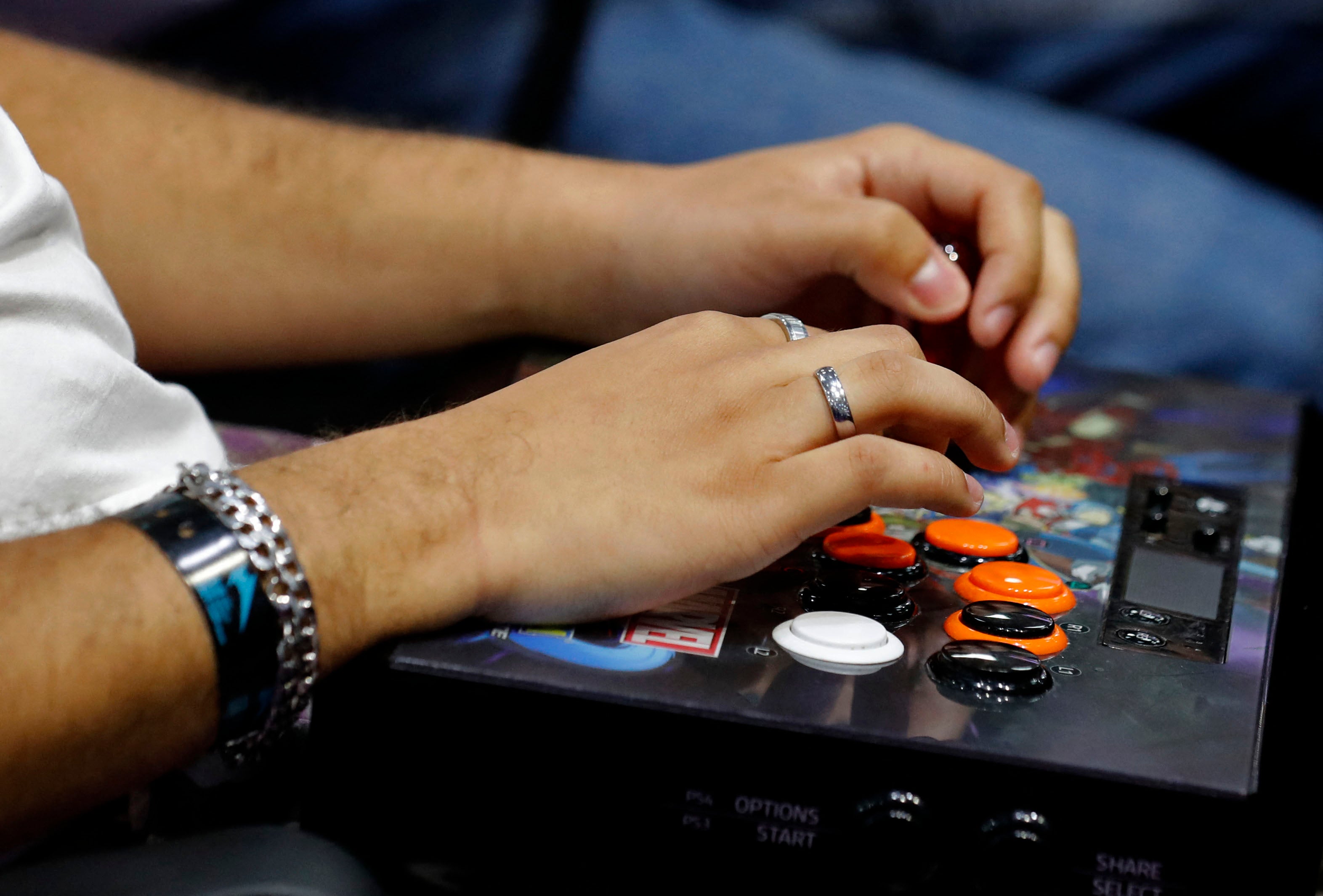The surprising health toll e-sports can have on its competitors
It might sound laughable to a rugby player, but e-sports gamers feel the wear and tear of their competitions. Greg Leporati explains what is going on

Your support helps us to tell the story
From reproductive rights to climate change to Big Tech, The Independent is on the ground when the story is developing. Whether it's investigating the financials of Elon Musk's pro-Trump PAC or producing our latest documentary, 'The A Word', which shines a light on the American women fighting for reproductive rights, we know how important it is to parse out the facts from the messaging.
At such a critical moment in US history, we need reporters on the ground. Your donation allows us to keep sending journalists to speak to both sides of the story.
The Independent is trusted by Americans across the entire political spectrum. And unlike many other quality news outlets, we choose not to lock Americans out of our reporting and analysis with paywalls. We believe quality journalism should be available to everyone, paid for by those who can afford it.
Your support makes all the difference.Early last year, Thomas “ZooMaa” Paparatto – at the time a top e-sports player in the Call of Duty League – made a startling announcement: He was retiring at the age of 25 due to lingering injuries.
“For a while, I had no range of motion in my thumb,” Paparatto recalled in a recent interview with The Washington Post. A ganglion cyst, likely caused by gaming, had developed on one of his thumb tendons in 2016 and required surgery. “It was something I struggled with the entire second half of my career,” he said. “I always felt the wear and tear after long gaming sessions, and it was difficult to live the professional grind.”
Paparatto's story is not unusual in the e-sports industry. Other prominent players like League of Legends pros Hai Lam and Kurtis “Toyz” Lau Wai-Kin, as well as Dota 2's Clinton “Fear” Loomis, retired in their twenties due to wrist and hand injuries. Current players in the pro circuit often miss matches due to nagging aches and pains.
For casual observers, this might seem odd. How can Tom Brady win a Super Bowl at 43 while young gamers struggle to participate in a seemingly sedentary activity? Chuck Tholl, a research associate at German Sport University Cologne, says this perception is far from reality.
“E-sports might not seem as active [as traditional sports],” he says, “but gamers are performing micro-movements and fine motor skills that, without preventative measures, can very much harm their bodies.”
According to Tholl, professional e-sports players perform as many as 400 actions per minute – movements like mouse clicks and keystrokes – that place a physical load on their fingers, wrist, neck, back and lower arms. Over time, this can lead to a variety of ailments like muscle weakness, tendinopathy, nerve compression and lower back pain.
While traditional sports often lead to obvious, acute injuries, such as a dislocated shoulder, twisted ankle or torn cruciate ligament, e-sports ailments are gradual and chronic, which make them hard to detect. As such, players often continue to compete unaware that they're making an existing issue worse.
I gave a talk at a medical convention in 2018 about e-sports medicine in a room full of thousands of people, and half of them started laughing when I said what I was doing
“It might not hurt on a day-to-day basis,” Tholl explains, “but in the long term, it can affect your musculoskeletal system and cause really big problems.” Most top professional gamers, he continued, end their careers before they reach the age of 30, whereas prominent athletes in traditional sports like basketball or soccer routinely play at a high level well into their thirties.
Some prominent e-sports organisations are now taking steps to mitigate these injuries and lengthen the careers of their players. For example, Evil Geniuses, a Seattle-based e-sports organisation, hired Lindsey Migliore in January to serve as director of player performance, a newly created full-time position.
“We're losing these players in their early 20s due to preventable injuries that could've been, and still can be, treated,” she says.
The stress of constant gaming can structurally damage a player's tendons, Migliore explains. Treatment plans often include building up the strength of those tendons through exercise, regular stretching, improving posture and taking frequent breaks during practice sessions. She also advocates that her players get plenty of sleep – not easy for teenage gamers – and adopt a rigorous, lengthy warm-up routine before matches. In short: the kind of training that's become routine for athletes in traditional sports.
“Think about it: Tom Brady doesn't just show up a half-hour before kick-off, put on some pads, and start throwing bullets,” she says.
In addition to treating individual cases, Migliore says that popularising and legitimising e-sports medicine among gamers, the general public and even the broader medical community are among her long-term goals.

“I gave a talk at a medical convention in 2018 about e-sports medicine in a room full of thousands of people, and half of them started laughing when I said what I was doing,” she recalls. “Gamers often go to paediatricians and primary care doctors for treatment, and they're the ones who need to know this information ... but people don't take this stuff seriously.”
Paparatto echoes that sentiment. When initially seeking treatment for his thumb injury, he met with multiple doctors who dismissed his concerns.
“[The first few doctors] pretty much told me there was nothing wrong, it's all in my head,” Paparatto says. “They didn't take me seriously when I said I play video games for a living ... Most doctors just aren't knowledgeable about gaming.”
For Matt Hwu, an e-sports medicine specialist who has treated professionals at major e-sports organisations like Counter Logic Gaming and Immortals, raising awareness about these kinds of injuries is crucially important for the evolution of e-sports. His medical practice, 1-HP, frequently creates infographics and myth-busting YouTube videos to draw attention to the seriousness and prevalence of gaming injuries.
“It will take time for us to educate the community about preventative measures,” Hwu says. “It means changing it at the root – in high school, the collegiate level and lower pipelines where players first enter the sphere of e-sports.”
Many of today's professional gamers acknowledge that injuries are a necessary reality, though they are now learning – through organisational support and independent e-sports doctors – how to deal with them appropriately.
Philippe “Vulcan” Laflamme, a 22-year-old League of Legends player for Evil Geniuses, said that injuries and the fear of early retirement have always been in the back of his mind. He has experienced wrist, neck and back pain throughout his career and says the support of professionals like Migliore has changed his approach to gaming.
“When I was 16, I would just play the game as much as humanly possible,” he says. “Now, I'm more aware and ask myself: Will these extra games be useful, or could they take a year off of my career? Will they do more harm than good?”

Signs of gaming-related injuries can manifest among pro players of any age. Archie Pickthall, a 16-year-old professional “Rocket League” player for Semper E-sports, began experiencing significant wrist pain eight months ago. “I had a rough period where I could hardly do anything because the pain was so bad,” he says. “I thought about whether I'd have to quit sooner than I wanted to.”
Pickthall had no luck getting a specific diagnosis back when he first felt pain and is now waiting to see a hand specialist. But he notes that he has begun to improve after adopting regular stretching, warm-up exercises and other techniques that he researched. While the team he plays for does not have a doctor on staff, he is hopeful that as the issue of gaming injuries receives more attention, eventually all e-sports organisations will provide team doctors to help spread awareness about preventative measures.
“I don't think a lot of players stretch much, and that's so essential,” he says. “Having team doctors on hand would be great because they know how to prepare the players and prevent pretty much all of these injuries.”
As for Paparatto, he has moved on to become a content creator and streamer for popular gaming brand FaZe Clan. Although he is still heartbroken over his retirement from the Call of Duty League, he hopes his story will serve as a cautionary tale for the next generation of players in the professional circuit.
“I want people in general to become more knowledgeable about the pro gamer lifestyle, how difficult it is physically,” he says. “And I'm starting to see players today taking much better care of themselves – exercising and stretching. Gaming is heading in the right direction.”
And medical professionals like Hwu and Migliore agree that professional gamers could – and one day likely will – be playing into their thirties, forties and maybe even beyond.
"Imagine having the Tom Brady and Rob Gronkowski pairing of e-sports,” Migliore says. “It'll change the face of the game. It's the future, but it requires an investment in player health.”
© The Washington Post




Join our commenting forum
Join thought-provoking conversations, follow other Independent readers and see their replies
Comments